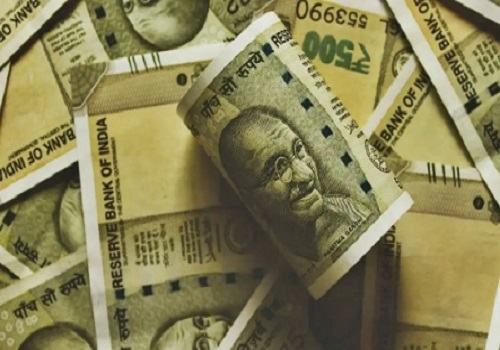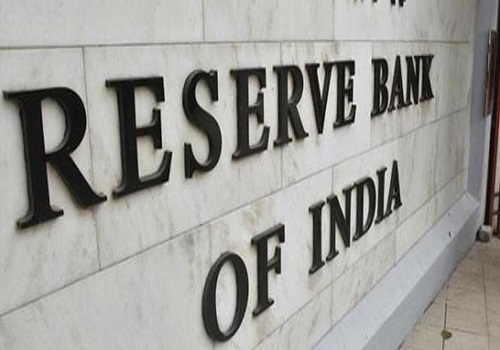Agri Picks Daily Technical Report 2 February 2022 - Geojit Financial

Follow us Now on Telegram ! Get daily 10 - 12 important updates on Business, Finance and Investment. Join our Telegram Channel
SPICES
• NCDEX Spices complex was down on Tuesday. Turmeric April futures declined the most, shedding more than two per cent, on lacklusture demand. Coriander and jeera futures too inched down on tepid demand.
• According to the second advance estimates by Gujarat state agriculture department, jeera production is seen declining to 236980 tons in 2021-22, down 41 per cent year on year. Area is seen at 289000 ha as against 473800 ha a year ago. Coriander production is seen declining as well to 211680 tons compared to 221240 tons in 2020-21.
• Exports of spices from India during Apr-Sep declined 8% on year to 780,273 tn, according to data from the Spices Board India.
• Spices Board pegs Apr-Sep jeera exports at 139,295 ton, down 14%.
• Spices Board pegs Apr-Sep turmeric exports at 77,245 ton, down 26%.
• Spices Board pegs Apr-Sep pepper exports at 10,844 ton, up 24%.
• Spices Board pegs Apr-Sep small cardamom exports 4,240 ton, up 101%.
• Spices Board pegs Apr-Sep coriander exports at 24,459 ton, down 13%
• India exported 299,000 tn of jeera in 2020-21, up 40% on year according to the Spices Board.
• According to Spices Board, Coriander exports from India were up 21% on year at 57,000 ton.
• Government sees 2020-21 coriander output at 720000 tons compared to 701000 tons a year ago.
• Spices Board sees exports of turmeric up 33% to 183000 tonnes in FY 2020-21 on yoy basis.
• Government sees 2020-21 turmeric output at 1.11 million tonnes compared to 1.15 million tons a year ago.
• Spices Board pegs FY21 small cardamom export 6,500 ton, up 251% on year.
• Output of small cardamom is seen rising by 100% on year to 22520 tons according to the Spices Board.

COTTON
• Cotton yarn exports from India may hit record high levels in 2021-22 (Apr-Mar), rating agency ICRA said in a report. Cotton yarn exports in the first half of the current fiscal increased 47% on year. In the first nine months of the current fiscal, cotton yarn prices increased 36% on year, while cotton prices were up by 42%. Recovery in domestic demand and robust growth in overseas demand has supported volumes. An improvement in capacity utilisation and greater financial flexibility have resulted in a rise in capital expenditure in the cotton spinning segment over the past months. "Besides competitive Indian cotton and cotton yarn prices in the international markets, concerns raised by large buying regions, including the US and the European Union, on Xinjiang cotton and healthy growth in Bangladesh’s apparel exports are driving export demand," Nidhi Marwaha, vice president – corporate sector ratings, ICRA said in the report.
• The Cotton Association of India has scaled down its production estimate for the 2021-22 (Oct-Sep) marketing season to 34.8 mln bales (1 bale = 170 kg), from 36.0 mln bales projected a month ago. The reduction in estimate is attributed to some crop loss because of excess rain in November, in the key producing states which impacted crop quality. Of the total crop, around 14.0 mln bales had arrived in markets across India till December. Exports in the ongoing marketing year has been maintained at 4.8 mln bales. India shipped around 1.9 mln bales of cotton till December. The association has revised upward its estimate for domestic cotton consumption and imports at 34.5 mln bales and 1.5 mln bales, respectively. Ending stock for the 2021-22 season has been estimated at 4.5 mln bales, as against 6.2 mln bales projected a month ago.
• The US Department of Agriculture has scaled down its estimate for 2021-22 (Aug-Jul) cotton production in India to 27.5 mln bales (1 US bale = 218 kg), from 28.0 mln bales projected a month ago. The reduction in estimate is attributed to some crop loss because of excess rains during November. Lower yields in Punjab and Haryana due to pink bollworm infestation and untimely rains in the key producing states has impacted the quality of the crop. The agency has slightly increased its estimate for India's domestic consumption at 26.0 mln bales, as against 25.8 mln bales a month ago. Exports have been maintained at 5.8 mln bales. Ending stocks for the country are now seen at 10.1 mln bales for 2021-22 season, compared with 10.8 mln bales a month ago.
• On global front, the agency has scaled down its global production estimate to 120.9 mln bales from 121.6 mln bales a month ago. The downward revision was mainly due to a likely smaller crop in the US and India. Global cotton consumption is seen almost flat at 124.2 mln bales in 2021-22. Exports are estimated at 46.6 mln bales, lower than the earlier projection of 46.9 mln. The agency has lowered its 2021-22 global ending stocks estimate to 85.0 mln bales from 85.7 mln bales.
• India's cotton exports in the 2021-22 (Oct-Sep) marketing year have been muted, mainly due to a recent surge in domestic prices that has made overseas sales economically unviable, trade officials said. Forward export deals have slowed down because of record high prices. In the ongoing marketing year, around 1.5 mln bales (1 bale = 170 kg) of cotton were exported till December, sharply lower than the previous year. In 2020-21, India had shipped 2 mln bales in Oct-Dec, according to trade officials. This season, most of the consignments have been shipped to Bangladesh, followed by China, Indonesia and Vietnam. China isn't actively buying this year, according to trade officials.
• The production of cotton is seen higher in the 2021-22 (Jul-Jun) season due to a likely rise in yields, despite a fall in acreage this year. The state's cotton output is expected to increase 18% on year to 8.5 mln bales (1 bale = 170 kg). Cotton yield in the current season is seen at 642.1 kg per ha, as against 540.4 kg per ha in the previous year, according to the second advance estimate by the state agriculture department.
• The UK-based Cotton Outlook has scaled down its estimate for global production in 2021-22 (Aug-Jul) by 43,000 tn to 26.0 mln tn, in its December report. The estimate has been revised downward as production in India is expected to be lower. The agency has marginally raised its output estimate for China, Pakistan, and the US. Cotton production in Indiais seen at 5.99 mln tn against 6.17 mln tn estimated in the previous month. The production in China is seen at 5.76 mln tn, while the US is likely to produce 3.98 mln tn. The agency has also lowered its estimate for global consumption in 2021-22 by 180,000 tn to 25.97 mln tn owing to a sharp fall in demand from China. Global cotton ending stocks are estimated at 27,000 tn for the ongoing 2021-22 season.
• The International Cotton Advisory Committee has lowered its forecast for global prices for 2021-22 (Aug-Jul) due to a rise in global production and ending stocks estimate, the agency said in a report. The committee revised downward its price forecast for Cotlook A Index, a global benchmark for prices of raw cotton, by 1 cent from the previous month to 103 cents per pound. In 2021-22 season, the committee estimated global ending stocks for the season at 20.5 mln tn, slightly higher than 20.4 mln tn in the previous season. Global consumption is seen almost steady at 25.6 mln tn. The agency sees global export for the season at 10.2 mln tn, as against 10.6 mln tn a year ago. Global production for the ongoing season is estimated at 25.7 mln tn, compared with 24.3 mln tn in the previous season. The rise has largely been attributed to higher production in the US and Brazil. In the US, cotton production is estimated at 3.96 mln tn, against 3.18 mln tn a year ago. Output in India, the largest producer, is expected to be 5.9 mln tn, compared with 6.0 mln tn in the previous year.
• India's cotton exports have slowed down in the current marketing year that began on Oct 1 as higher domestic consumption led to a tight supply situation and a rise in local prices, said market experts. In the ongoing marketing year of 2021-22 (Oct-Sep), around 200,000 bales of cotton were exported till October. Most of the consignments were shipped to Bangladesh followed by China and Vietnam, a trade official said. "Forward export deals of 600,000- 700,000 bales of cotton for Nov-Dec delivery are still in transit, these deals were struck at a price of 115-125 cents per pound on a cost-and-freight basis," said Dharmendra Jain, director of Ahmedabad-based D.P. Cotton. Exports may touch around 900,000 bales by December, which is sharply lower than the previous year. In 2020-21, India shipped around 1.2-1.5 mln bales during Oct-Dec, industry experts said.
• The new season for cotton which started on Oct 1, is expected to be good for farmers as the market price of the fibre is currently more than the minimum support price, due to firm demand and a rise in global prices.
• Sowing of cotton across the country has ended and farmers have sown the crop across 12 mln ha in the 2021-22 (JulJun) kharif season, down 6% from a year ago, data from the farm ministry.
• India's cotton output in the 2021-22 (Oct-Sep) marketing year is seen at 36.2 mln bales (1 bale = 170 kg), as per the median of estimates of 13 prominent players in the cotton value chain polled by Informist.
• In the ongoing 2021-22 (Jul-Jun) season, cotton acreage across the country was 11.9 mln ha as on Thursday, down 5.8% from a year ago, data from the farm ministry showed.
• In the Union Budget for 2021-22 (Apr-Mar), Finance Minister Nirmala Sitharaman proposed customs duty of 5% on cotton and 10% on cotton waste. She also proposed an Agriculture Infrastructure and Development Cess of 5% on cotton, taking the overall customs duty to 10%. Customs duty on raw silk and silk yarn or yarn spun from silk waste has been increased to 15% from 10% earlier.

OTHERS
• Farmers across the country have sown chana across 11.43 mln ha in the 2021-22 (Jul-Jun) rabi season as of Wednesday, up 3.9% on year, according to data from the farm ministry. Chana sowing so far has been higher in Madhya Pradesh, Maharashtra, Gujarat, and Uttar Pradesh, while it declined in Karnataka, Chhattisgarh and, Rajasthan. The acreage in Madhya Pradesh, the largest producer, was up 0.9% on year at 2.51 mln ha, and in Maharashtra, the second-largest grower, it rose 8.4% on year to 2.66 mln ha. The area in Gujarat rose significantly by 34.5% on year to 1.10 mln ha. On the other hand, the acreage fell in Rajasthan by 1% on year to 2.04 mln ha, and in Karnataka by 6.1% on year to 1.10 mln ha.
• The Securities and Exchange Board of India has asked the National Commodity and Derivatives Exchange to not launch any new chana contracts on its platform till further notice, the market regulator said in a release on August 16, 2021.
• Government raises MSP for Rabi crops for season 2022-23. MSP for chana has increased by 2.5 % to Rs. 5230/qtl. against Rs. 5100/qtl previous year.
• India’s guar gum exports decreased in the month of November 2021 by 25.01% to 17,466 tonnes compared to 23,292 tonnes during previous month at an average FoB of US $ 2169 per tonne in the month of Nov’2021 as compared to US $ 1849 per tonne previous month. Further, the gum shipments were up by 30.21% in Nov’2021 compared to the same period last year. Of the total exported quantity, around 4,645 tonnes bought by US, Russia 4,000 tonnes, Germany 1,322 tonnes, china 1,070 tonnes, Australia 1,041 tonnes and Canada 862 tonnes.
• India’s guar split exports increased in the month of Nov’2021 by 1.55% to 2,620 tonnes compared to 2,580 tonnes previous month at an average FoB of US $ 1,557 per tonne in the month of Nov’21 compared to US $ 1,325 per tonne previous month. However, the guar split shipments gone down by 42.51 % in Nov’21 2021 compared to the same period last year. Of the total exported quantity, around 1,900 tonnes bought by China, US 660 tonnes and Switzerland 60 tonnes.
• According to Rajasthan govt 2021-22 second advance estimates, Guar seed production is seen a tad down at 1.1 mln tn. 2021-22 acreage stood at 21.13 lakh hectare as compared to 24.84 lakh hectare last year.
• According to Gujarat govt 2021-22 first advance estimates, Guar Seed production estimate pegged at 1.01 lakh tonne Vs 0.85 Lakh tonnes last year, Additionally, 2021-22 acreage stood at 1.21 lakh ha Vs 1.22 lakh ha. Yield pegged higher at 873 kg/ha Vs 699 Kg/ Ha last year

OILSEED
• Farmers have sown mustard across 9.14 mln ha in the country, up 25.1% on year, in the ongoing 2021-22 (Jul-Jun) rabi season as of Friday, according to the farm ministry's data. The government fixed the minimum support price of the crop at 5,050 rupees per 100 kg for the 2022-23 (Apr-Mar) marketing season, as against 4,650 rupees in the previous year.
• The Solvent Extractors' Association has urged the Centre and the Securities and Exchange Board of India to resume futures trade in mustard seed on the National Commodity and Derivatives Exchange.
• India's oilmeal exports fell 67% on year to 170,338 tn in December, according to Solvent Extractors' Association of India. In Apr-Dec, overall exports of oilmeal were at 1.77 mln tn, down 28.4% on year. Soymeal exports fell drastically to 262,337 tn in Apr-Dec, compared with 888,202 tn in the same period last year because the Indian variant is priced higher in international markets. In Apr-Dec, mustard meal exports fell about 22.2% on year to 713,593 tn, while exports of castor meal were down 10.8% on year at 282,464 tn.
• In its January report, the US Department of Agriculture has scaled down its estimate for global soybean production in 2021-22 to 372.6 mln tn from 381.8 mln tn pegged in the previous month's report. The lower estimate is largely attributed to a decline in output in South American countries, including Brazil. The department lowered the soybean production estimate for Brazil for 2021-22 by 5 mln tn to 139 mln tn because of dry weather conditions in south Brazil in December. The estimate for global ending stocks for 2021-22 has been scaled down to 95.2 mln tn from 102 mln tn pegged the previous month. The global soyoil production estimate for 2021-22 has been revised downwards to 61.3 mln tn from 61.6 mln tn. Similarly, the global soyoil export estimate for 2021-22 has been revised marginally lower to 12.5 mln tn from 12.7 mln tn estimated the previous month. Also, the estimated global soymeal output for 2021-22 has been revised downwards to 255.9 mln tn from 257.6 mln tn, according to the report. The estimate for global exports of soymeal in 2021-22 has been cut marginally to 69.9 mln tn from 70.8 mln tn in December. According to the report, global oilseed production in 2021-22 is seen lower at 619.2 mln tn against 627.6 mln tn pegged in December, due to a decline in soybean output in Brazil. Global vegetable oil output in 2021-22 is estimated at 213.9 mln tn, against a projection of around 215.0 mln tn in December.
• India's vegetable oil imports fell 9.6% on year to 1.23 mln tn in December, the SEA. Vegetable oil imports for Nov-Dec were at 2.40 mln tn, against 2.46 mln tn in the same period last year. Edible oil imports were nearly at 1.22 mln tn in December against 1.33 mln tn a year ago, and for Nov-Dec the edible oil imports were at 2.36 mln tn, as against 2.41 mln tn year-on-year. In December, import of crude palm oil was at 528,143 tn, as against 748,006 tn during the same month previous year. The recent spread of the Omicron variant has resulted in a decline in demand from bulk buyers and subsequently reduced imports. As on Jan 1, 580,000 tn of edible oil was at ports, against 630,000 tn from a year ago, while 1.14 mln tn in the pipeline against 1.19 mln tn during same period last year.
• The Solvent Extractors' Association has urged the government to exempt soyoil from genetically-modified labelling requirement as it may lead to a rise in prices, it said in a letter. Last year, according to reports, the Centre had asked states to enforce separate labelling for genetically-modified soyoil to help consumers make informed decision.
• Production of canola in Canada for 2021-22 (Aug-Jul) is seen at a 13-year low of 12.6 mln tn, Agriculture and Agri Food Canada said in its December report. Supply of canola for the country is estimated at 14.5 mln tn, the lowest since 2008-09, on tight carry-in stocks, reduced output and modest imports. Export of canola is likely to fall 49% on year to 5.4 mln tn. Volatility for canola prices is expected to remain high with the market vulnerable to sharp corrections from either demand or supply shocks.
• The Centre has included soymeal under the Essential Commodities Act with immediate effect till Jun 30 to regulate production, stocking, and distribution of the commodity.
• The government has reduced the basic import duty on refined, bleached, and deodorised palm oil, to cool domestic prices, the finance ministry said in a notification. The new duty rates will be in place till Mar 31, the ministry said. The effective basic import duty on refined, bleached, and deodorised palm oil has been reduced to 12.5% from 17.5% earlier. With the new duty cut, the duty difference between crude palm oil, which is a raw material, and refined, bleached, and deodorised palm oil, which is the finished product, has reduced to 5.5% from 11.0% earlier.
• The Securities and Exchange Board of India asked exchanges not to launch new contracts of some farm commodities, including those of soybean and its derivatives, and crude palm oil. The restrictions come into effect immediately and shall be applicable for one year.
• The Central Organisation for Oil Industry and Trade has estimated India's mustard output in the 2021-22 (Jul-Jun) rabi season at 10-11 mln tn because of increase in acreage, it said in a release. In 2020-21 the country produced around 8.5 mln tn of mustard, which is a crucial oilseed sown in the rabi season during Sep-Oct and harvested from February.
• The soymeal exports in November increased 27.4% on year to 270,000 tn, the Soybean Processors Association of India said in a release. For Oct-Nov, soymeal exports fell to 291,000 tn from 347,000 tn a year ago. Soymeal production fell in November to 559,000 tn from 918,000 tn a year ago, it was at 1.04 mln tn during Oct-Nov, lower than 1.67 mln tn during the same period a year ago. Soybean arrivals in spot markets were lower at 14,000 tn in November compared to 19,000 tn during the same time last year. During Oct-Nov, arrivals fell to 2.9 mln tn from 3.7 mln tn during the same period last year. By the end of November, mills, traders, and farmers were left with around 9.91 mln tn of soybean stock.
• The National Commodity and Derivatives Exchange will not charge transaction fees on GUAREX and SOYDEX futures contracts up to Mar 31, the bourse said in a circular. This is to encourage active participation and market development of index products.
• The Centre cut basic duty on crude palm oil, crude soybean oil and crude sunflower oil from 2.5% to nil The agri-cess on these oils has been brought down from 20% to 7.5% for crude palm oil and 5% for crude soybean oil and crude sunflower oil, the Finance Ministry said. The basic duty on RBD Palmolein Oil, Refined Soybean and Refined Sunflower Oil has been slashed to 17.5% from the current 32.5%
• India's 2020-21 (Jul-Jun) mustard output is seen rising 22.6% on year to 8.95 mln tn, according to a joint survey by the Central Organisation for Oil Industry and Trade and the Mustard Oil Producers' Association.
• The government reduced the effective import duty on CRUDE PALM OIL to 8.25% from 24.75%, and the effective import duty on REFINED SOYOIL to 19.25% from 35.75%
• India's soybean acreage in the 2021-22 (Jul-Jun) kharif season remained unchanged at 12.2 mln ha, agri ministry.
• The base import tax on crude palm oil has been slashed to 2.5% from 10%, while the tax on crude soyoil and crude sunflower oil has been reduced to 2.5% from 7.5%, the government said in a notification late on Friday. The base import tax on refined grades of palm oil, soyoil and sunflower oil cut to 32.5% from 37.5%. After the cuts, crude palm oil, soyoil and sunflower oil imports will be subject to a 24.75% tax in total, including a 2.5% base import duty and other taxes, while refined grades of palm oil, soyoil and sunflower oil would carry a 35.75% tax in total.
• The government allowed the import of 1.2 mln tn of genetically-modified soymeal till Oct 31 to augment supply in domestic markets, the Directorate General of Foreign Trade said in a notification.
• Malaysia's crude palm oil output fell 11.3% on month to around 1.5 mln tn in December, according to data from the Malaysian Palm Oil Board. Exports of palm oil in December fell 3.5% on month to 1.4 mln tn, and outbound shipments of biodiesel sharply fell by 76.6% on month to 13,371 tn. Total palm oil stocks in the country decreased 12.9% on month to around 1.6 mln tn as on December-end.
• CPO exports from Malaysia for the Jan 1-15 period were lower at 91,234 tn, against 158,650 tn during the same period last month.
• Acreage under oil palm in north-eastern states is likely to increase by 50-60% by 2025 depending on the availability of seedlings, a farm ministry source said.
• Indonesia's crude palm oil output is expected to rise 2.6% next year to 51.01 million tonnes from a 2021 estimate of 49.71 million tonnes, head of the Estate Crop Fund Eddy Abdurrachman said.
To Read Complete Report & Disclaimer Click Here
Please refer disclaimer at www.geojit.com
SEBI Registration number is INH200000345
Views express by all participants are for information & academic purpose only. Kindly read disclaimer before referring below views. Click Here For Disclaimer










Tag News

We anticipate immense potential benefits from the upcoming Sovereign Gold Bond Tranche in FY...
More News

Sell Zinc OCT 2021 @ 298.00 SL 306.00 TGT 290.00-285.50.MCX - Kedia Advisory












